Archive | Water RSS feed for this section
Governance and public sector management, Health, Sanitation, Social development and protection, Water
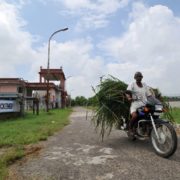 Capacity development, Health, Social development and protection, Urban development, Water
Capacity development, Health, Social development and protection, Urban development, Water
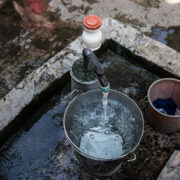 Education, Gender, Sanitation
Education, Gender, Sanitation
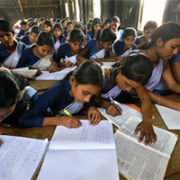 Health, Water
Health, Water
 Agriculture and natural resources, Capacity development, Environment, Governance and public sector management, Health, Water
Agriculture and natural resources, Capacity development, Environment, Governance and public sector management, Health, Water
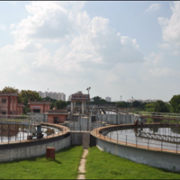 Sanitation, Water
Sanitation, Water
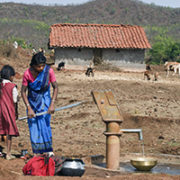 Education, Population, Sanitation
Education, Population, Sanitation
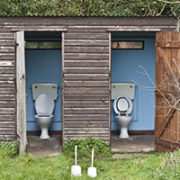 Sanitation, Water
Sanitation, Water
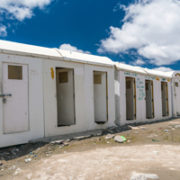 Sanitation, Water
Sanitation, Water
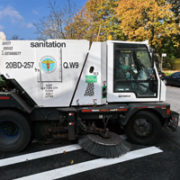 Environment, Water
Environment, Water

Top journal articles on sanitation reveal new policy insights

An examination of the published journal articles on development economics reveals a striking pattern—very few are devoted to the analysis of sanitation interventions and development. In a recent systematic review of all sanitation-related articles from the top-12 highest-ranking journals on development economics (Revilla et al. 2021), we attempt to understand the linkages between sanitation and development based on current qualitative and quantitative empirical work.
Making citywide inclusive sanitation a reality through capacity development
By Abishek Narayan, Christoph Luthi, Ma. Laarni Revilla, Deepanshu Agarwal and KE Seetha Ram. Posted January 18, 2021

Over a billion people across Asia and the Pacific still lack access to basic sanitation services (JMP 2019). Most low- and middle-income countries in Central Asia, South Asia, and East Asia still do not have safely managed sanitation services. Further, only a fifth of the countries practicing open defecation are on track to eliminate this practice around the world. Clearly, business as usual in the sanitation sector has not solved this challenge in the last several decades.
Does sanitation access improve schooling outcomes for girls and boys?

All the sanitation improvement projects and investments over the years beg the question of whether we have seen a significant increase in school enrollment and gender parity in education or not. While most empirical studies on sanitation focus on the relationship between sanitation and health, recent studies have now looked into the downstream impacts of sanitation on other development indicators, such as those related with education and gender.
COVID-19 reminds us to prioritize “water supply, sanitation, and hygiene” (WASH) to reduce child mortality

The coronavirus disease (COVID-19) has registered 959,116 deaths worldwide as of 21 September 2020. While the number is alarming, it is still not large compared with the 5.2 million children who died due to various causes in 2019, according to UNICEF. COVID-19 reminds us how much child mortality continues to be a significant challenge for global health and the global economy. In addition to the loss of human lives, the economic consequences are also significant.
Do the socioeconomic spillovers from sewage treatment plants in developing countries justify heavy investment in them?

Decent sanitation for all is crucial for rapidly urbanizing developing countries, such as India. As large volumes of wastewater in developing countries remain untreated, the investments in treatment facilities have not kept pace with the steady increases in population and urbanization and the resulting increases in wastewater volumes.
No matter how poor you are, there is always a way to improve sanitation

The “out of sight, out of mind” attitude is proving to be critical for the slow progress toward target 6.2 of the Sustainable Development Goals (SDGs), focusing on global, safely managed sanitation. There is a general lack of awareness among users on the whereabouts of their poop, and the discussion on wastewater management is scarce and still a taboo topic in many parts of the world, leading to a lack of safely managed sanitation services. Besides the lack of demand hampering progress, the supply side of wastewater management is equally grim.
“Theory of change” as a solution to the global sanitation crisis

The most exciting part of my journey here at the Asian Development Bank Institute is that I get to meet inspiring leaders who have contributed immensely to helping solve the pressing challenges related to sustainable development. This time it was an interaction opportunity with the world-renowned “Mr. Toilet”, i.e., Mr. Jack Sim. If it were not for the efforts of Mr. Toilet and the World Toilet Organization (WTO), the United Nations would not have recognized 19 November as World Toilet Day, an effort by the global agency to mainstream the discussion on wastewater.
The sanitation economy: Digging for treasure

In both respects, sanitation is deeply embedded. Grids of sewer pipes have been fixed into the surface of cities in the developed world for more than a century, and it has become a strong and important part of most policy makers’ belief that this is how to provide sanitation. Or, despairing of such systems ever being built in developing countries, some have swung to the opposite view, advocating off-grid solutions, which, while less embedded in the ground, become an equally strong and important part of their proponents’ beliefs.
Evidence-based capacity building can inspire policy makers to accelerate sanitation interventions in Asia

National and local governments in Asia are facing significant challenges to effectively deliver access to sanitation, as well as to properly collect, transport, dispose of, and treat fecal sludge. Actions taken by governments at present have been to implement large-scale sewer networks, which are prohibitively expensive, and which take years to plan and build. To address the growing challenges and requirements of sanitation, many cities are using a combination of on- and off-site sanitation solutions provided by a range of service providers comprising civil society partners, private companies, and municipalities or utility companies.
Composite Water Management Index: A pathway to solve the water crisis in India

The National Institution for Transforming India (NITI Aayog) and, more importantly, the citizens of India have acknowledged that the country is undergoing the “worst water crisis” in its history—and they are making commendable efforts to address it. They have proposed a comprehensive index to create awareness and to enable effective water management for the Indian states. In June 2018, NITI Aayog, the premier think tank for the Government of India, proposed the Composite Water Management Index, a tool to assess and improve the efficiency of water resource management.


Search
Subscribe / Connect to Asia Pathways
Subjects
- Agriculture and natural resources
- Blog
- Capacity development
- Climate change
- Economics
- Education
- Energy
- Environment
- Finance sector development
- Gender
- Governance and public sector management
- Health
- Industry and trade
- Information and Communications Technology
- Infrastructure
- Miscellaneous
- Population
- Poverty
- Private sector development
- Regional cooperation and integration
- Sanitation
- Social development and protection
- Transport
- Uncategorized
- Urban development
- Video Blog
- Water
Recent Posts
- Artificial intelligence: A new driver for inclusive growth and development?
- Increasing trust in cross-border e-commerce and artificial intelligence
- Enhancing access to maternal and newborn healthcare in developing Asia
- Can electric vehicles lead the way to a sustainable future?
- Mitigating climate-related sovereign risk to accelerate action on the climate emergency




Recent Comments